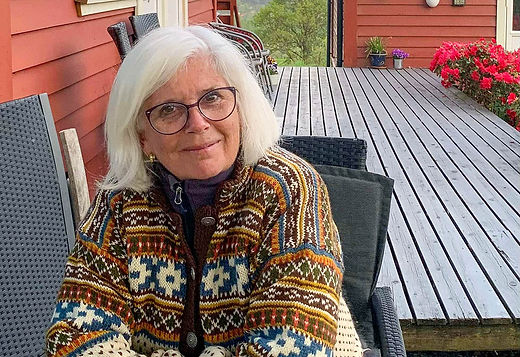Some of our visitors
Martin Randall Travel
Martin Randall Travel
Martin Randall Travel organizes cultural trips of the highest quality with a focus on specific themes, including music. It is therefore no surprise that in recent years we have offered a trip to the Lofoten International Chamber Music Festival.
The enchanting combination of extraordinary, remote landscapes and world-class music has delighted participants time and time again. The charm of the festival lies in the variety of venues used, from concert halls to rural churches, which allow us to travel through a wide range of landscapes and settings.
The tour combines daily concerts with visits to museums and galleries, excursions into the stunning countryside and meals in excellent restaurants.
During the week, the festival artists perform in different combinations, which gives the concerts an intimate and personal feel, along with the lively introductions given by the festival organizer.
No wonder these tours are always sold out!


Dr Michael Downes OBE
Director of Music at the University of St Andrews, musical director of St Andrews Chorus, and founding artistic director of Byre Opera.
He has lectured for the UK’s leading opera companies and writes notes for Wigmore Hall and Aldeburgh Music. Publications include books written both with and about British composer Jonathan Harvey, and a collaboration with Nike Wagner, great-granddaughter of Richard.
Story of the Century, his new book on Wagner’s Ring, was published in November 2024 by Faber and was named by Presto Music as one of the five best music books of 2024; it will be published in the US by Pegasus Books in July 2025 as Wagner and the Creation of The Ring.
Michael’s next book will be a biography of Elgar, to be published by Oxford University Press
Marit Anne Almås
It's always extra nice when we get good feedback from our audience, and we have been allowed to reproduce what Marit Anne Almås posted on her FB page after attending the concert where Anna Fedorova performed Mussorgsky's Pictures at an Exhibition. "Our trip to the north is coming to an end, and we are on our way home. We have had many wonderful experiences. There is one in particular that I would like to tell you a little about. It is from Friday, July 11th in Svolvær: Wow! Maybe it was because the day started with rain. ? Or maybe it was because we could just as easily return the rental car? We found out that we would rather use the day for a concert day. And maybe it was all the logistics surrounding this that meant that I was not mentally prepared for what was to come? The work we were going to hear was well-known. In fact, more than well-known, so we didn't have to "read up" on the music. Mussorgsky's "Pictures at an Exhibition" was one of my first conscious encounters with classical music. In middle school, I was allowed to borrow the LP record home from my music teacher. The story of Mussorgsky's painter friend who died, and Mussorgsky's wish to honor him by making music for his paintings, fascinated me a lot. And I listened to a lot of music. While I listened to the music, I could clearly see the pictures in my mind. The music, "Pictures at an Exhibition" followed me all my years in school as a teacher. I used the music for all it was worth. We got to the concert on time, and found ourselves a decent seat inside the large hall at Thon's hotel. It was gray outside. Then the pianist comes in. Anna Fedorova is from the Ukraine. She bows and sits down at the piano. And when she starts playing the introduction, or "The Promenade" as Mussorgsky called it, I am completely taken aback. Even though I know the music inside out, it touches me enormously. The solemn introduction, the "promenade" - the anticipation of the "pictures" that we are now about to hear. And the pianist plays so beautifully. The lump in my throat is there, and I struggle to hold back the tears. And first comes "The Gnome" (the dwarf). Suddenly I see all the different pictures of this figure that students have drawn over the years. In the piano version, which Mussorgsky originally wrote, the description is raw and unpolished. Then comes “The Old Castle”, the mysterious, fairy-tale and venerable castle. Oh, how many times we took pictures of the castles the students painted, and then we showed them to everyone on the screen while the music played. The chickens dancing ballet inside the eggs are played so beautifully and “alive”. And in between the pictures comes “The Promenade”, where we as the audience “move” on to a new picture. I enjoy myself. There is a very special atmosphere in the hall. The audience is so quiet and attentive, and the pianist plays and “paints” one picture after another.



